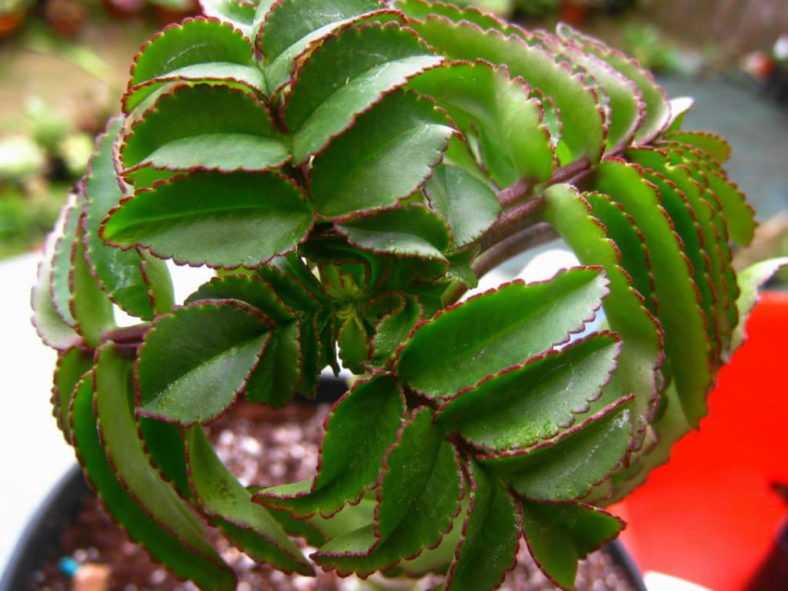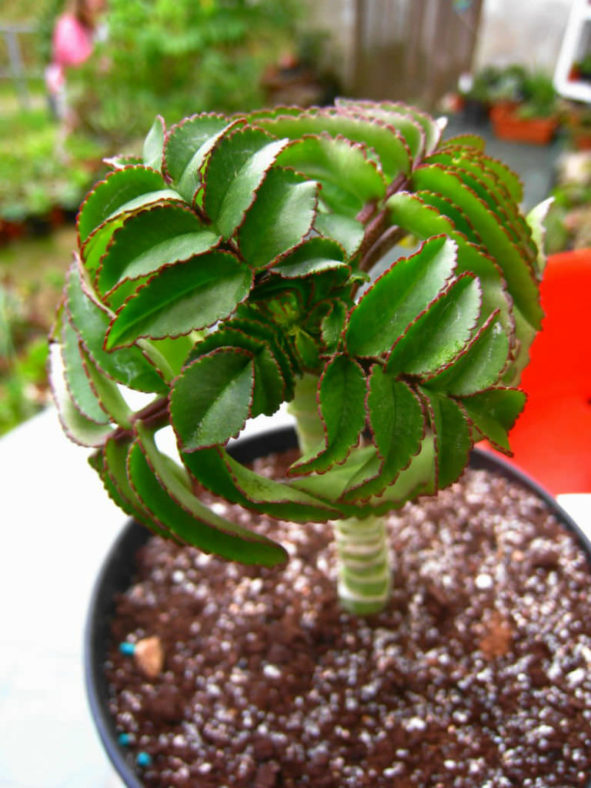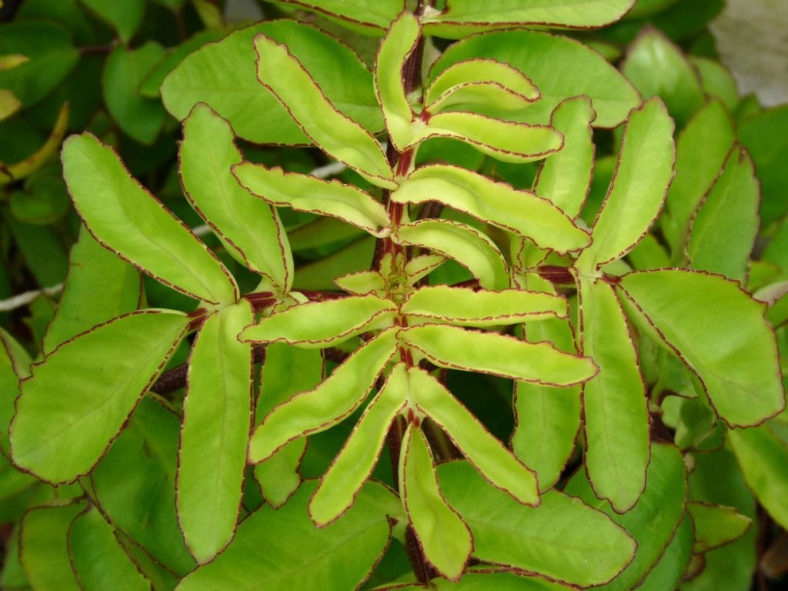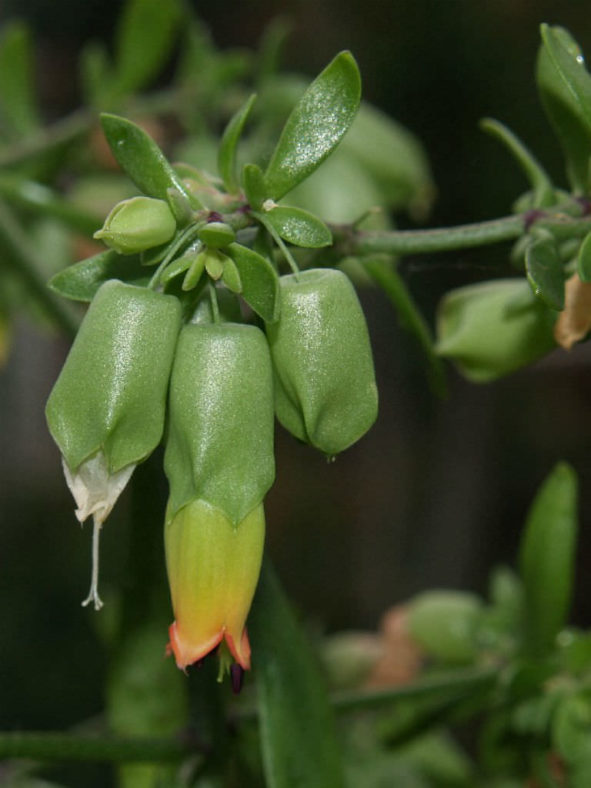Scientific Name
Kalanchoe prolifera (Bow.) R.-Hamet
Common Name(s)
Blooming Boxes, Flaming Katie, Jurassic Kale, Palm Beach Bells
Synonym(s)
Bryophyllum cochleatum, Bryophyllum proliferum
Scientific Classification
Family: Crassulaceae
Subfamily: Sedoideae
Tribe: Kalanchoeae
Genus: Kalanchoe
Etymology
The specific epithet "prolifera" (pronounced "pro-LEEF-er-uh") means "proliferous" and refers to the abundant production of bulbils by this species in the inflorescence and on the leaves when cut off.
Origin
Kalanchoe prolifera is native to central Madagascar but cultivated and often naturalized in numerous tropical countries. It occurs in Antananarivo Province, growing on rocky ground at elevations from 3,300 to 6,500 feet (1,005 and 1,980 m).
Description
Kalanchoe prolifera is an interesting, fast-growing succulent with a stout, unbranched stem and fleshy, usually pinnately compound leaves. The stem is erect to procumbent, more or less 4-angled with visible leaf scars, and can grow up to 10 feet (3 m) tall and 2 inches (5 cm) in diameter. The leaves are green, often with reddish-purple petioles and margins. When attached to the plant, the leaves do not typically produce bulbils, but when cut off, they become bulbiliferous.
After several years, when Kalanchoe prolifera matures, the stem is topped with a compound panicle of pendent flowers in late winter or early spring. The panicle can reach a height of up to 32 inches (80 cm) and a width of 16 inches (40 cm). The corolla is tubular, typically red, green, or yellow, and can grow up to 1 inch (2.5 cm) in length. The plant dies after blooming but often sucker up with a new stem, and many bulbils form in the inflorescence, making it easy to establish a colony.

How to Grow and Care
Hardiness: USDA hardiness zones 9b to 11b: from 25°F (-3.9°C) to 50°F (10°C).
Kalanchoe care is minimal, but be cautious about light levels. Intense sunlight can burn the tips of the leaves. Place pots in partial sun to light shade areas when growing Kalanchoes.
The flowering varieties are highly rewarding for their colorful and long-lasting flowers. They prefer bright, sunny locations, especially in the growing season. Water moderately from fall to winter when the growth is most active. Reduce watering during the hottest summer months, when plants are mostly dormant, and during winter, when growth slows significantly. Let the soil surface dry out between waterings. Watch the fleshy leaves for signs of water distress. An ordinary potting soil mix is fine. Feed bi-weekly during the growing season with a liquid fertilizer, or use slow-release pellets.
These small plants require repotting every few years. When repotting, take extra care when handling, as the leaves are somewhat brittle and can snap easily. Clay pots work exceptionally well for planting Kalanchoes. Ensure pots can drain well and saucers can empty easily.
Learn more at How to Grow and Care for Kalanchoe.
Links
- Back to genus Kalanchoe
- Succupedia: Browse succulents by Scientific Name, Common Name, Genus, Family, USDA Hardiness Zone, Origin, or cacti by Genus
Photo Gallery
Click on a photo to see a larger version.


